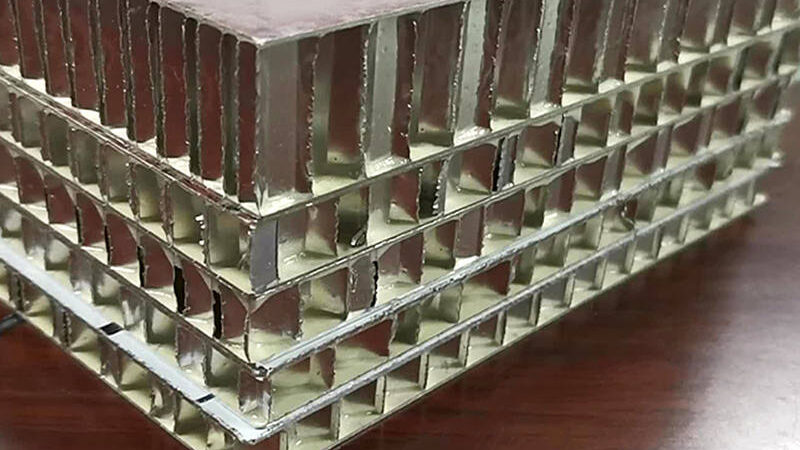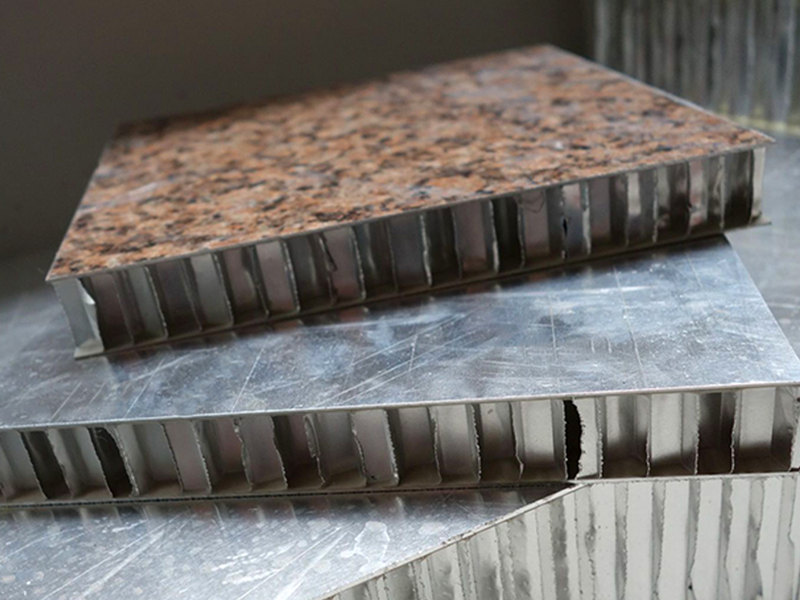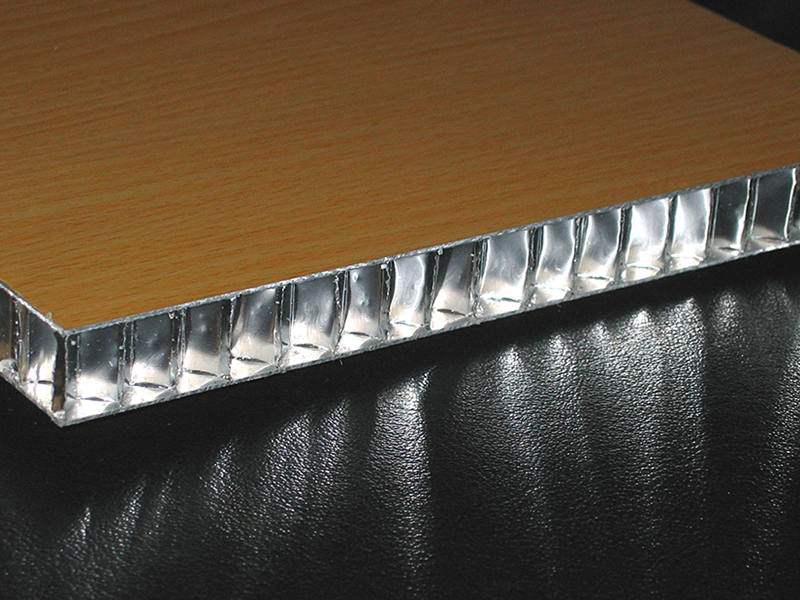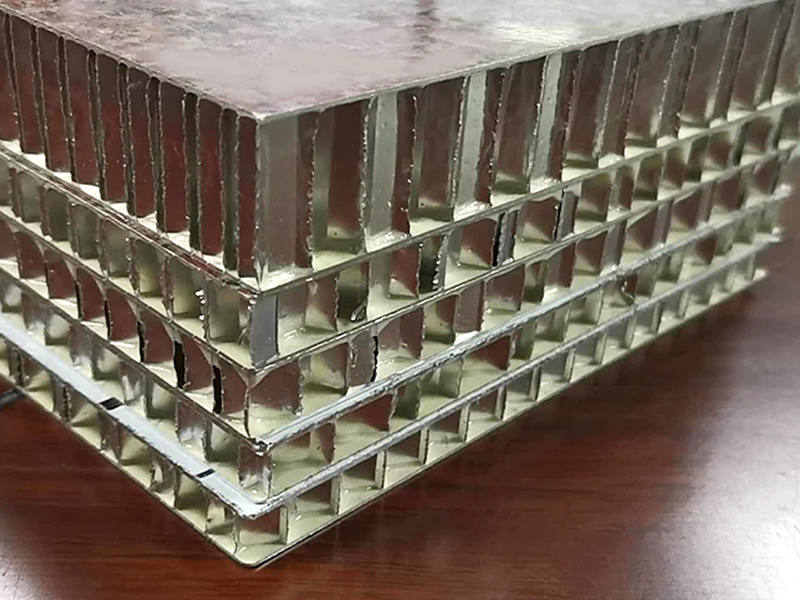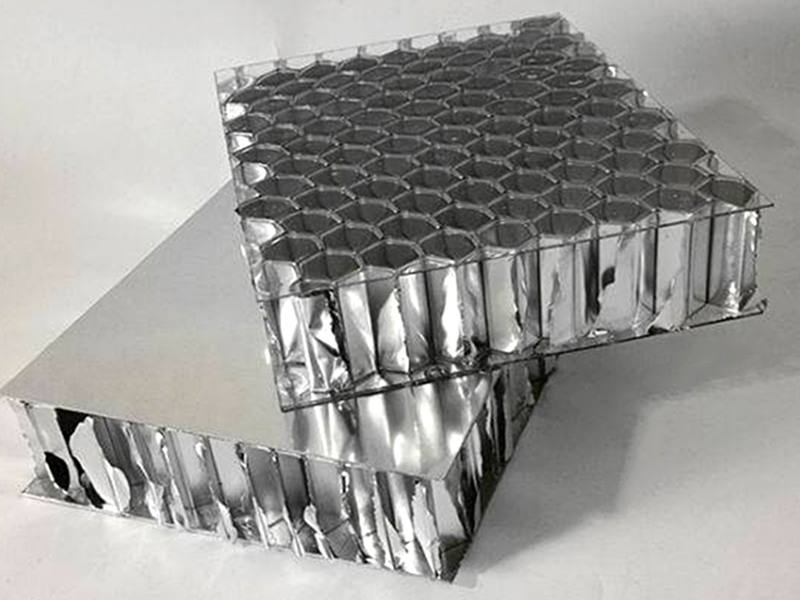1. Understanding Aluminum Honeycomb Sandwich Panels
Aluminum honeycomb sandwich panels are composed of three main layers: two thin, outer layers of aluminum and a honeycomb-shaped core between them. The honeycomb core is what gives these panels their unique properties, providing excellent strength-to-weight ratios. The hexagonal pattern of the core ensures rigidity and minimizes material usage, making the panels both lightweight and strong.
These panels are valued for their:
Lightweight Construction: Despite their strength, aluminum honeycomb sandwich panels are extremely lightweight, making them ideal for applications where reducing weight is crucial, such as in aircraft, marine, and vehicle construction.
Durability and Strength: The combination of aluminum and the honeycomb core gives the panels superior strength and resistance to deformation, ensuring long-term durability.
Corrosion Resistance: Aluminum’s natural corrosion resistance makes these panels highly suitable for use in harsh environments, where exposure to moisture and chemicals is common.
Thermal and Acoustic Insulation: Aluminum honeycomb panels offer excellent thermal and acoustic properties, helping regulate temperature and reduce noise in various applications.
2. Consider the Application
Before choosing aluminum honeycomb sandwich panels, it’s important to consider the specific application and industry you’re operating in. Different applications may require panels with unique properties or specifications. Common applications include:
Aerospace and Aviation: In these industries, the lightweight and high-strength nature of aluminum honeycomb panels is critical for reducing the weight of aircraft while maintaining structural integrity.
Construction and Architecture: Panels have uses for facades, curtain walls, and partitions due to their strength, ease of installation, and aesthetic appeal.
Automotive and Marine: Honeycomb panels have wide applications in the manufacturing of cars, trains, and boats. It provides enhanced structural support without adding significant weight.
Industrial and Cleanroom Applications: In industrial settings, aluminum honeycomb panels have uses as wall panels or partitions in cleanrooms and laboratories due to their durability and ease of cleaning.
Identifying the specific use case will help you determine the appropriate thickness, core density, and surface finish for your application.
3. Selecting the Right Core Material and Density
The honeycomb core in aluminum sandwich panels plays a critical role in determining the panel’s performance. When selecting panels, consider the type of core material and its density:
Aluminum Core: Aluminum honeycomb cores are the most common, offering excellent strength-to-weight ratios. They are ideal for applications where durability, rigidity, and corrosion resistance are key.
Nomex Core: In some aerospace applications, a honeycomb core has uses instead of aluminum. This aramid fiber core offers high-temperature resistance and flame retardancy, making it suitable for applications that require additional fire safety.
The core’s density impacts both weight and performance. Higher-density cores provide greater strength and rigidity but add to the overall weight of the panel. Lower-density cores reduce weight while maintaining structural performance, making them ideal for weight-sensitive applications like aerospace or automotive design.
4. Consider the Thickness of the Panel
The overall thickness of the aluminum honeycomb sandwich panel is another important factor to consider. Thicker panels provide more strength and rigidity, making them ideal for structural applications. On the other hand, thinner panels are lighter and may be more suitable for non-load-bearing applications, such as partitions or decorative elements.
Panel thickness typically ranges from a few millimeters to several centimeters, depending on the application’s specific requirements. For heavy-duty structural applications, thicker panels may be necessary to provide the required support and stability.
5. Surface Finishes and Customization Options
Aluminum honeycomb panels can be customized with various surface finishes to suit different aesthetic or functional needs. Popular surface finishes include:
Anodized Aluminum: Anodized panels are highly resistant to corrosion and offer a sleek, professional appearance. This finish is ideal for architectural applications or in environments where panels may be exposed to moisture or chemicals.
Powder Coating: Powder-coated aluminum panels can be customized in a wide range of colors and finishes. This option has uses in decorative or architectural applications where color matching or specific design aesthetics are required.
PVC Film Coating: For additional protection and visual appeal, some panels may come with a PVC film coating that offers both durability and an extra layer of corrosion resistance.
Customization options also include panel size, shape, and edge finishing, allowing manufacturers to tailor the panels to specific project needs.
6. Quality Standards and Certifications
When sourcing aluminum honeycomb sandwich panels, it’s crucial to ensure they meet the relevant industry standards and certifications. This ensures that the panels perform reliably in their intended application. Look for the following certifications and standards:
ISO 9001: A certification indicating that the manufacturer adheres to international quality management standards, ensuring consistent quality and performance.
ASTM Standards: American Society for Testing and Materials (ASTM) standards provide guidelines for the material properties and structural performance of aluminum panels.
Fire Safety Certifications: For applications where fire safety is critical, make sure the panels comply with fire safety standards, such as UL 94 for flame retardancy or NFPA 285 for fire propagation.
Checking for these certifications ensures that the panels meet your industry’s safety and performance requirements.
7. Partnering with a Reliable Manufacturer
Choosing the right manufacturer for your aluminum honeycomb sandwich panels is essential for getting high-quality materials and reliable service. When selecting a manufacturer, consider:
Experience and Expertise: Look for manufacturers with a proven track record in producing aluminum honeycomb panels for your specific industry.
Product Range: Choose a manufacturer that offers a wide variety of panel sizes, thicknesses, core materials, and finishes to ensure you can get the exact product that meets your needs.
Customization Capabilities: Manufacturers that offer customization options, such as specific dimensions, finishes, and coatings, can help you create a product tailored to your application.
Customer Support: A good manufacturer will provide excellent customer service, from helping you choose the right product to offering technical support after purchase.
Conclusion
Aluminum honeycomb sandwich panels are a high-performance, versatile solution for manufacturers in industries ranging from aerospace to construction. By considering factors like core material, panel thickness, surface finish, and quality standards. You can choose the right panels for your specific application. Partnering with a reliable manufacturer ensures that you receive high-quality, durable panels that meet your project’s needs. It makes aluminum honeycomb sandwich panels an ideal choice for lightweight, durable, and cost-effective construction solutions.
